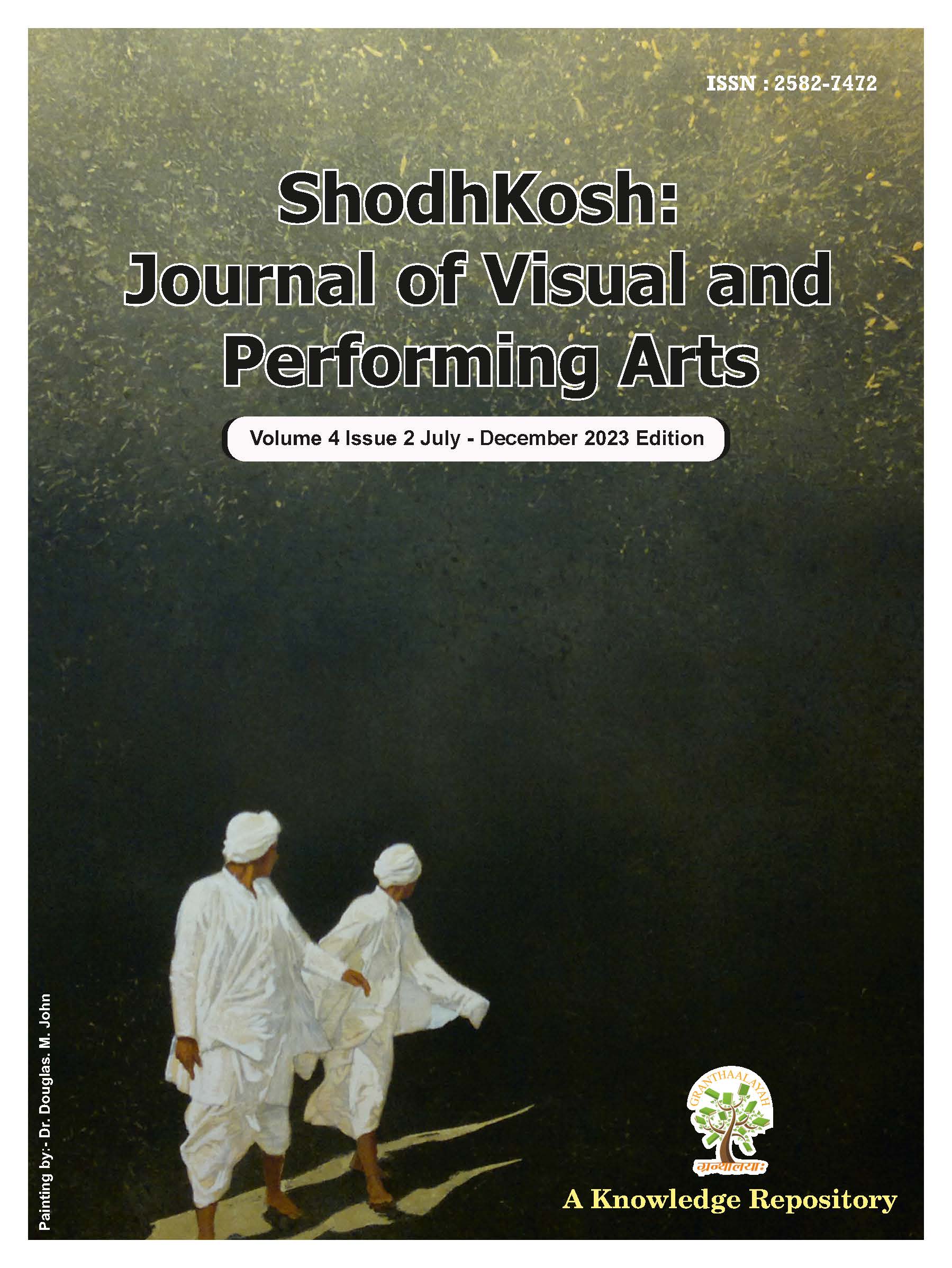INSCRIBED IN TIME: A HISTORICAL ANALYSIS OF PALAYUR COPPER PLATES
DOI:
https://doi.org/10.29121/shodhkosh.v4.i2.2023.6127Keywords:
Epigraphy, Inscription, Royal Proclamation, Copper PlatesAbstract [English]
This study explores the historical significance of the Palayur Copper Plates in understanding the economic transactions of 17th century Kerala. The primary objective was to analyze the epigraphic data from the four copper plates discovered from Palayur church, dating back to 1606, 1677, 1681, and 1743. To achieve this, a detailed examination of the copper plates was conducted, focusing on land sale, market, and money-based economy. The results revealed that the Palayur Copper Plates provide valuable insights into the changing trends of economic transactions during this period. These findings highlight the significance of epigraphy in reconstructing historical records and understanding the economic dynamics of ancient Kerala.
References
C.L Antony, Bhashapadanangal, Kerala Sahitya Academy,1989, pp34-35.
Jose Chittilappilly, Palayur Palli, Colourpot Publications, Palayur, p.7.
Sacaria Zacharia, Possibilities of Understanding Jewish Malayalam folk songs, Indo Judaic Studies 6, pp.29-47.
Jussay P M, The Jews of Kerala, 2005, p. 25.
Jacob Vellian,(ed) Symposium on Knanites, The Syrian Church Series vol 13,1986,pp.13-20.
Thekkedath,J, History of Christianity in India, vol 2, 2001,p.76.
Pallath,P, Rome and Chaldean Patriarchate in conflict: Schism of Bishop Rokos in India, 2017,pp.55-57.
Lukose,P.U, Malayalathile suriyani Kristhyanikalude Purathana Pattukal,1910,p.159.
T.R Venugopalan, Sambathum Adhikaravum- Thrissuril Ninnulla Kazhcha, Current Books,Thrissur, p.250
Jose Chittilappillly,op.cit.
T.A.S, Vol 3, Part 1,pp.81-82
T.R Venugopalan, op.cit.
T.A.S, Vol 6, Part 1, pp.87-88
T.A.S, Vol 6, Part 1, p.90.
T.R Venugopalan,op.cit,p.251.
Downloads
Published
How to Cite
Issue
Section
License
Copyright (c) 2023 Rincy T P, Saritha Sivadas, Dr. Sreeparvathi D, Animol Jacob

This work is licensed under a Creative Commons Attribution 4.0 International License.
With the licence CC-BY, authors retain the copyright, allowing anyone to download, reuse, re-print, modify, distribute, and/or copy their contribution. The work must be properly attributed to its author.
It is not necessary to ask for further permission from the author or journal board.
This journal provides immediate open access to its content on the principle that making research freely available to the public supports a greater global exchange of knowledge.































